School kitchens must be 'second classrooms' and kitchen staff, nannies, school health workers... must be educators because they all have a strong influence on students.
Dr. Le Van Tuan, senior expert, Department of Physical Education, Ministry of Education and Training, emphasized this at training sessions on organizing boarding meals to ensure food safety and proper nutrition for primary schools held in Ho Chi Minh City last week.
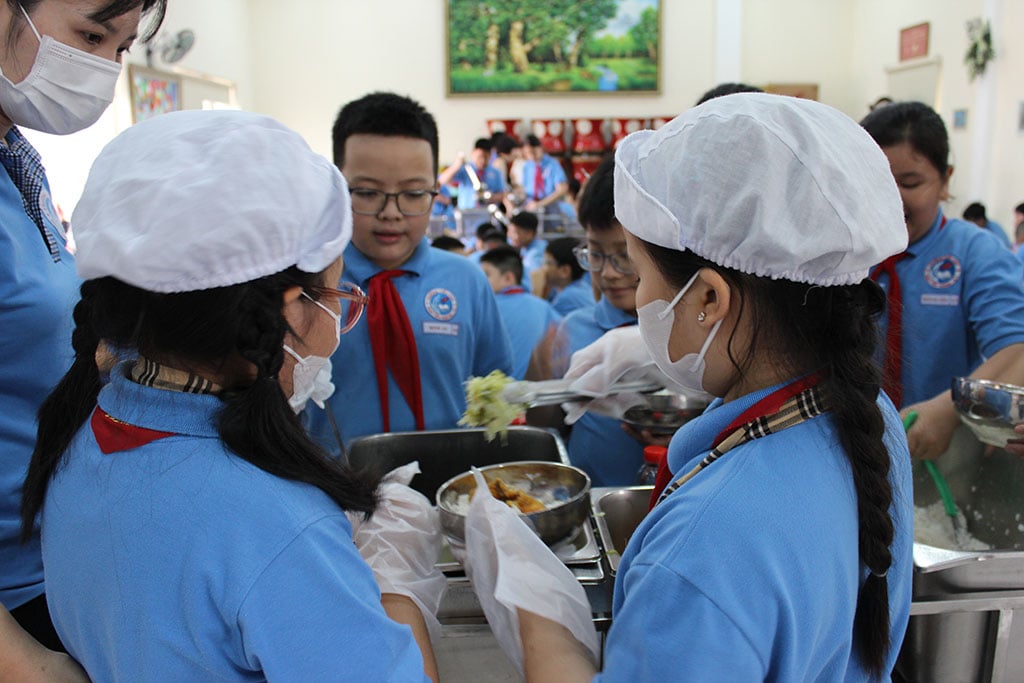
Students work as nannies, helping to divide meals for their friends to learn the spirit of loving work.
K CANNOT BE TAKEN LIGHTLY
According to Dr. Tuan, society is increasingly concerned about the quality of education, healthy meals and physical training of students, especially since the Covid-19 pandemic.
He said that in Ho Chi Minh City, there are currently three types of boarding kitchens in primary schools, including: directly managed and operated by the school; a unit providing cooking services at the school; ordering meals from an outside supplier. Mr. Tuan emphasized that regardless of the type, all kitchens must comply with food safety regulations.
Dr. Tuan requires that all stages and conditions in the boarding kitchen, from the facilities, processing area, dining area, food display and preservation area, kitchen workers, the system of books for recording and checking food and samples must be strictly followed. At the same time, it is necessary to affirm the great responsibility of the school and the board of directors in the stages of building mechanisms, ensuring human resources, checking and supervising the kitchen.
Mr. Tuan gave an example recently in some northern provinces where students had to eat food that was harmful to their health for a long time because the school board did not care and left it all to the kitchen and the food supply company; no one checked or supervised, allowing this situation to continue. Or in some places, the principal did not go to the kitchen for a whole month to eat with the students...
LESSONS LEARNED
The kitchen is not simply a place for students to eat quickly and finish. Dr. Tuan said that organizing mealtimes must also be educational. First of all, it is necessary to have discipline, eat and sleep on time. Mealtimes must be organized humanely and scientifically, students must know how to serve themselves, clean up...
"I have visited many schools in Japan, they organize mealtimes very well. The children are excited about mealtimes because they get to eat delicious food, everyone smiles when they meet the kitchen staff, the students receive the trays of rice from the teachers and bow to thank them. Every student eats their meal. I asked the reason, the children replied: "We visited the vegetable farm and the kitchen, saw the teachers and uncles working very hard to create this meal". The school kitchen is a place where students can be educated that they are being cared for, enjoying the fruits of adults' labor, how to enjoy, be grateful, and respect the efforts of teachers in the kitchen", said Dr. Tuan.
To do that, according to Dr. Tuan, when entering a school, chefs, caterers, nannies, and school health workers must all be educators. The way each person presents themselves to students, from their gait, eyes, behavior in the kitchen, cafeteria, etc., can greatly influence and impact the students. Therefore, each person, regardless of their position, needs to fulfill their responsibilities well. The board of directors also needs to regularly go to the kitchen, paying attention to whether the cafeteria lighting is adequate, whether it is too hot or noisy; whether the tables and chairs are clean; whether the students are comfortable; whether it is worthy of being the "second lecture hall" of the students?
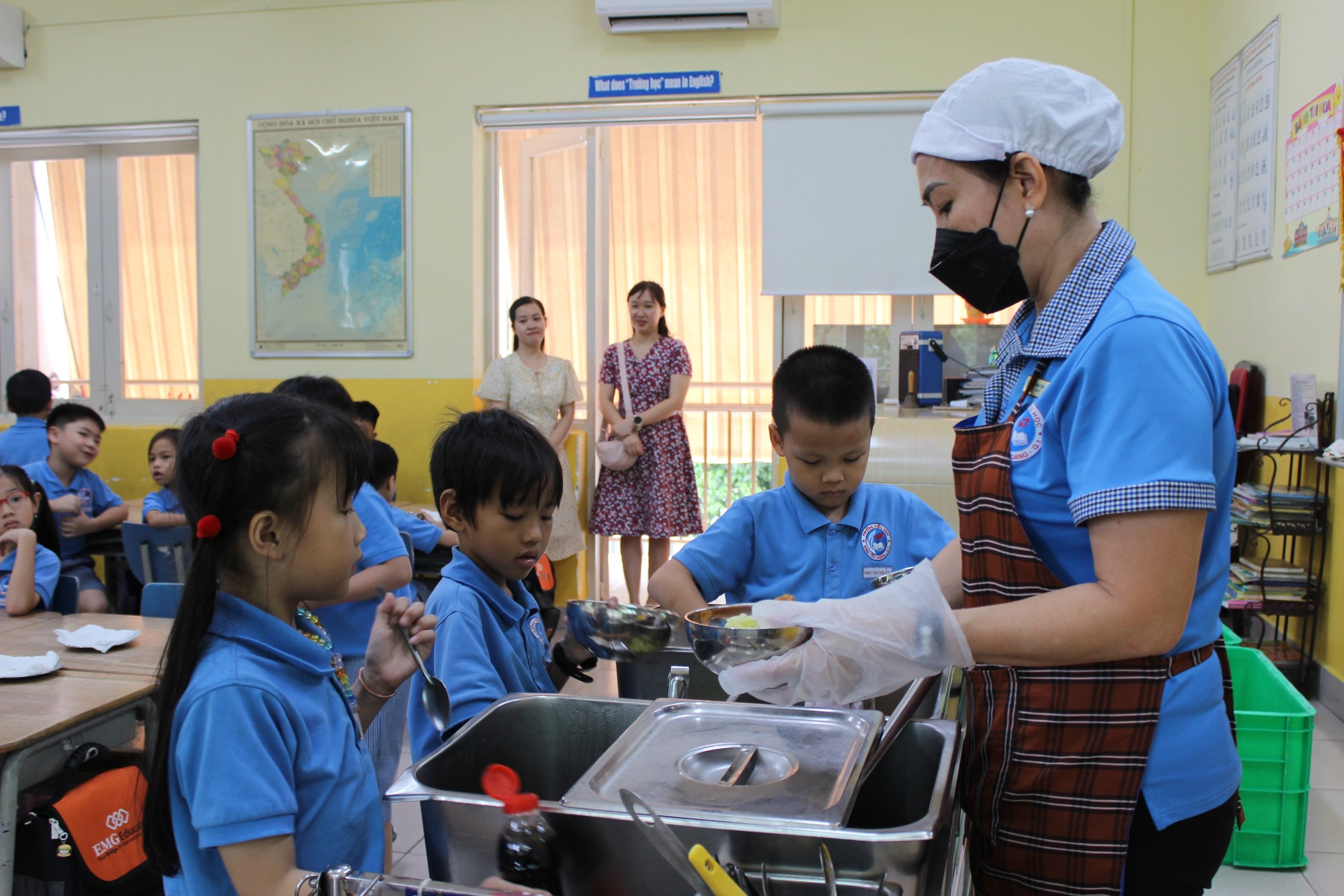
Nannies, school health workers… are also educators because they have a strong influence on students through school meals.
G HELPS STUDENTS HAVE A SPIRIT OF LOVE FOR WORK
Not just mealtime, every meal at primary schools in Ho Chi Minh City, students learn many soft skills and every school staff is an educator.
The bell rang to signal lunch time, and students of grades 2/3 at Dinh Tien Hoang Primary School, District 1, Ho Chi Minh City stood up and lined up to wash their hands. When they returned to their seats, they took their own napkins and listened to the teacher introduce the dishes on the menu, the main nutritional groups of the dishes, and their health benefits. Then, students were divided into groups to take turns getting rice and food with the help of the nanny. Students who ate slowly would line up to get rice first; the overweight group would eat soup and vegetables first, then rice and food. After the meal, the students cleaned up their own bowls and spoons and sorted the trash.
At the lunch area for 4th graders, each day, 2 students will take turns playing the role of nannies, dividing meals for their classmates with the teacher's support. After about 30 minutes of duty, these students change their clothes and eat their meals. Being a nanny is an honor and a responsibility for many students. Everyone eagerly waits for their turn. After lunch, each student sorts the trash and neatly puts the trays and plates in place. At the same time, some students hold a broom to help the teacher sweep the cafeteria, some hold a towel to clean, neatly put the tables and chairs in place... Ms. Ngo Ngoc Mai, a nanny for grades 4/6 and 4/7 at Dinh Tien Hoang Primary School, said that some students shared very emotionally that when participating in the work with teachers, they realized how hard it was for teachers at school, how hard it was for parents at home to have delicious meals...
Present at Trung Trac Primary School, District 11, Ho Chi Minh City, we saw students eagerly waiting for mealtime, the joy of many students is to eat with their close friends. Before mealtime, teachers have 3 minutes to chat with students about the vegetables, meat and fish in today's lunch. In the cafeteria, each class sits in their own area, students line up to get their rice; the principal and homeroom teachers are present during mealtime to remind students to eat more vegetables, fish dishes... School health workers and kitchen staff go around observing the students' meal area, seeing if students have finished their meals today, which dishes are left over, listening to students' opinions on each dish...
During the school year, the school board often invites parents to visit the kitchen and eat with their children. This not only helps to increase meal supervision but also helps parents understand the nutritional education process in schools, which can then be applied to family meals to help students develop comprehensively.
Cooking for students should be like cooking for your own children.
Talking to Thanh Nien reporter, doctor Huynh Trung Tuan, school health worker, Trung Trac Primary School, District 11, Ho Chi Minh City, said that school meals need to create a happy and comfortable atmosphere for students, without bullying or scolding children, and when eating with friends, children will eat more and enjoy it more than eating alone.
"To create safe, standard, and delicious meals for students, the school board must put its heart into it, must consider those who eat as their children; if your children eat well and finish their meals, you will be happy. The same goes for the head teacher and nanny, they must consider their children as eating at school," said Dr. Tuan, adding: "Somewhere, there are many opinions from parents and students that the rice is dry, little, and not delicious, and the children leave a lot of leftover rice, so the school board needs to review and ask questions to answer. If it needs to be resolved, then meet with parents to find a solution. When schools have safe, delicious meals with a rich menu, parents can be completely assured."
Source: https://thanhnien.vn/bep-an-truong-hoc-phai-la-giang-duong-thu-2-185241215215051324.htm













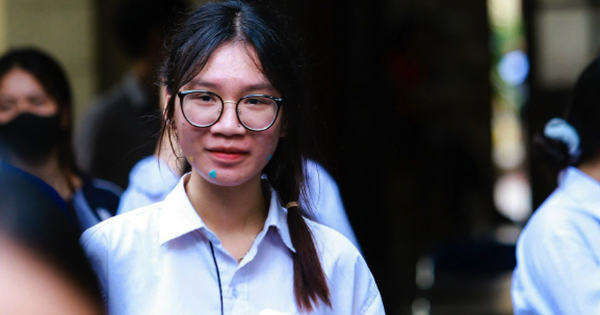
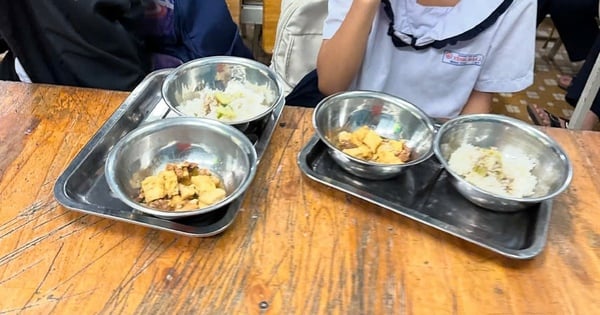

![[Video] Ministry of Education and Training plans to inspect and examine the 2025 High School Graduation Exam](https://vstatic.vietnam.vn/vietnam/resource/IMAGE/2025/4/12/682bfd48372e471f97b8627076eadc58)

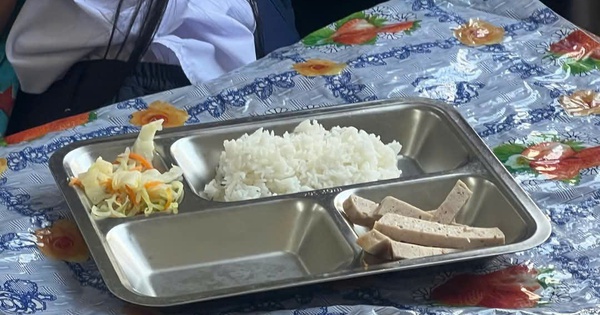











![[Photo] "Beauties" participate in the parade rehearsal at Bien Hoa airport](https://vstatic.vietnam.vn/vietnam/resource/IMAGE/2025/4/11/155502af3384431e918de0e2e585d13a)










































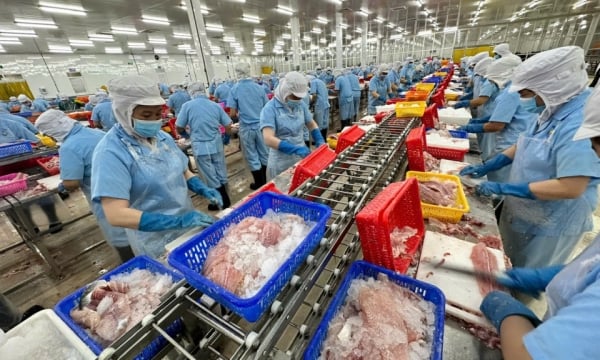






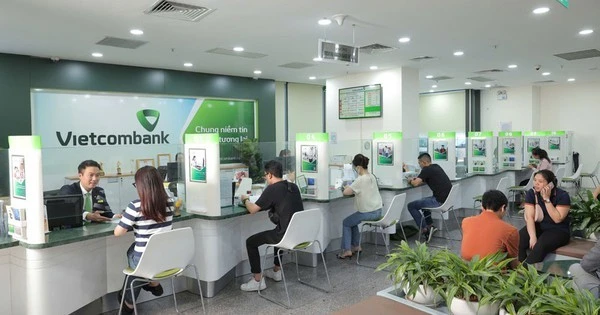











Comment (0)